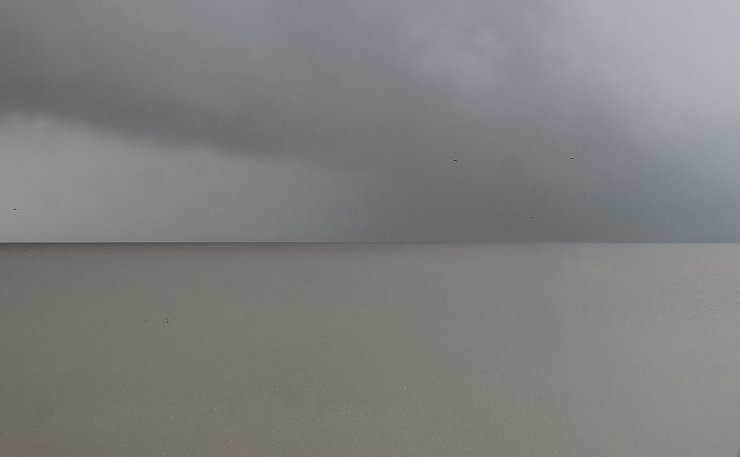
You know how you plan your regular Monday birding outing in spite of a category 2 hurricane making landfall on the coast, 135 miles away, because the rain bands are supposed to finish impacting your area at around 7:00 a.m.? And then the hurricane stalls, and the rain continues until noon, but you go birding anyway?
I hate it when that happens.
Actually, I didn’t hate it that much. First, this year’s rainy season was just enough to pull us out of an extreme drought, so an extra nine hours of steady rain, a couple of weeks after our normal monsoon season had ended, was a pretty wonderful cherry on the sundae. And my decision to take this as a learning experience led to some interesting conclusions — and even some pretty cool birds.
I had already chosen to go back up to Lake Cuitzeo on this particular day (October 25th). It turned out to be an inspired choice, because my usual style of birding — parking at a trailhead and walking kilometers away from both my car and most other forms of shelter — would indeed have been disastrous. Instead, I was able to stick close to my car, taking shelter in it when necessary, and still see lots of birds. Which I did. And here are some of the lessons I learned:
Lesson #1: It is possible to see and photograph birds while holding an umbrella over one’s optics. It is also awkward, since using my long lens (a must in the wide-open spaces of Cuitzeo) is a two-handed job. But photos were taken, and my camera and binoculars only got superficially wet.
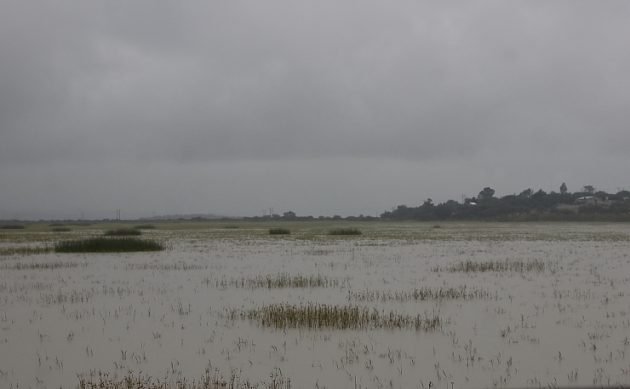
This is the early morning scene, with no adjustment to the image’s original light levels. (I brightened up the other photos in this post — a lot!)
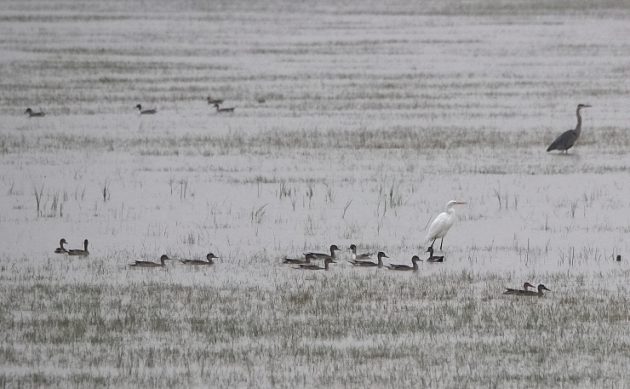
It was wet, but Great Egrets, Great Blue Herons, and Northern Pintails don’t care.
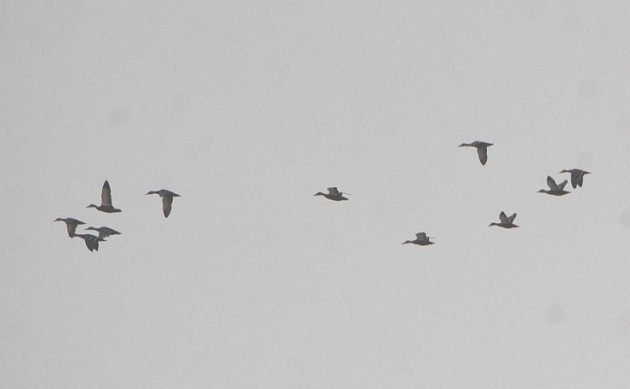
Photographing the ducks flying overhead was a pretty quixotic enterprise. Even so, I could tell (just barely) that these were Mexican Ducks. As my father used to say, that’s “good enough for government work”.
Lesson #2: When the rain gets to be too much for the umbrella method, stay in your car and take photos from a partially-open window. The inside of your car will get wet, but you and your camera won’t… much.
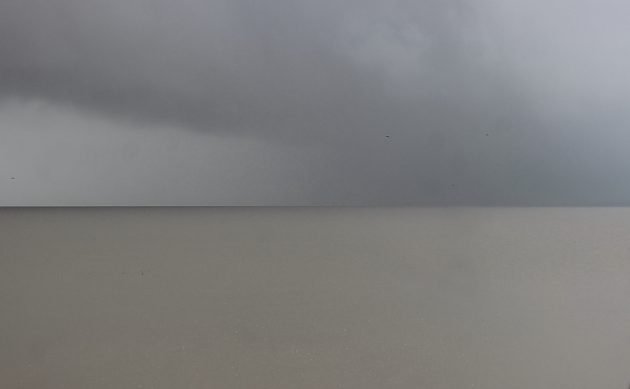
It got wetter.
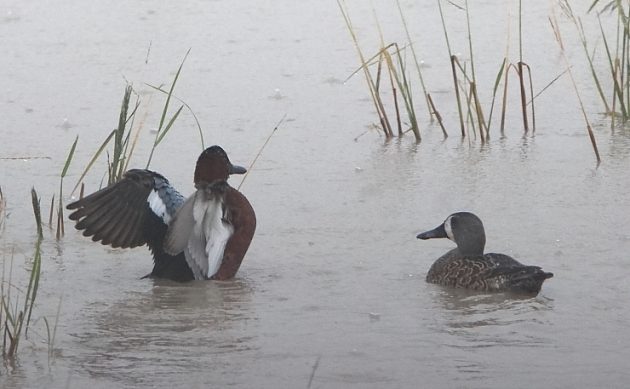
As an added bonus, this Cinnamon Teal and Blue-winged Teal probably wouldn’t have been so accepting of my presence, if I had gotten out of my car.
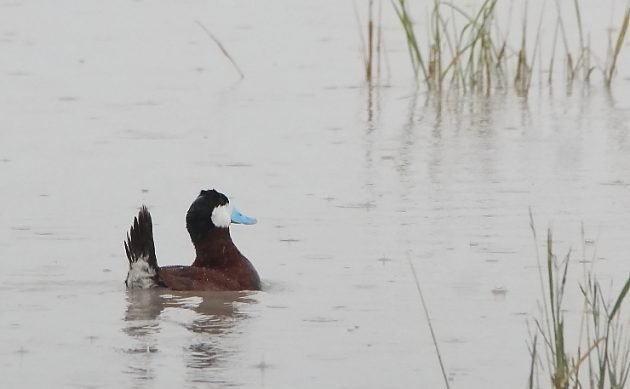
Ruddy Ducks don’t care about a little rain.
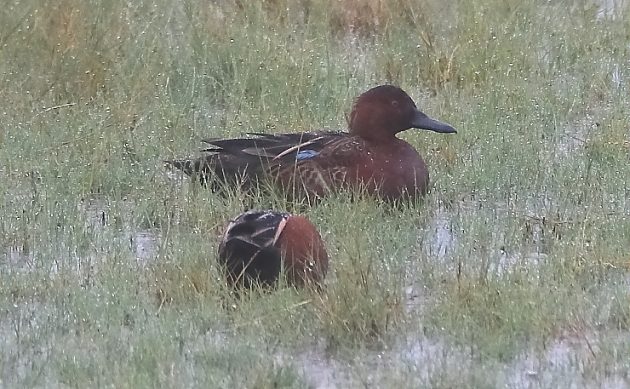
As the worst of the rain passed, Cinnamon Teals’ lovely colors just started to show.
Eventually, the rain lessened enough that I dared to move from the toll-road lake crossing (which has enough of a shoulder to park on, should I need to bird from my car), to the toll-free-road crossing. It was time to test the umbrella method again. And there, I learned Lesson #3: Even perching birds can be active on a rainy day, if the rains go on long enough.
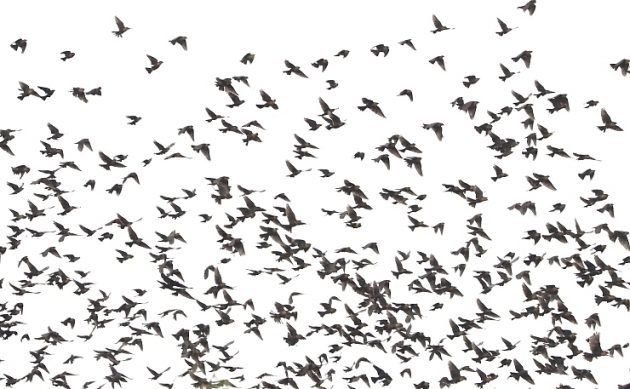
Great clouds of Blackbirds and Cowbirds, with a high percentage of Yellow-headed Blackbirds? Must be Lake Cuitzeo in the winter season.
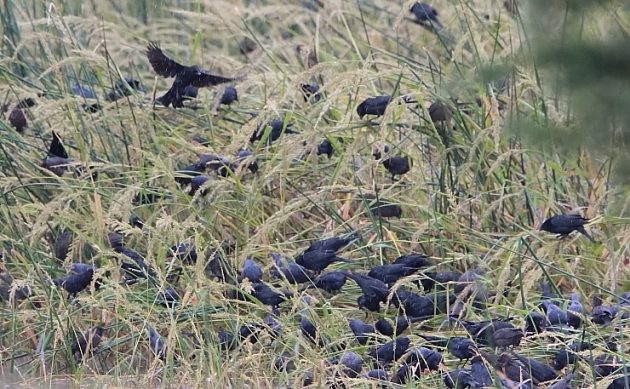
At ground level, Brown-headed Cowbirds seemed to predominate. (Bronzed Cowbirds were also present.)
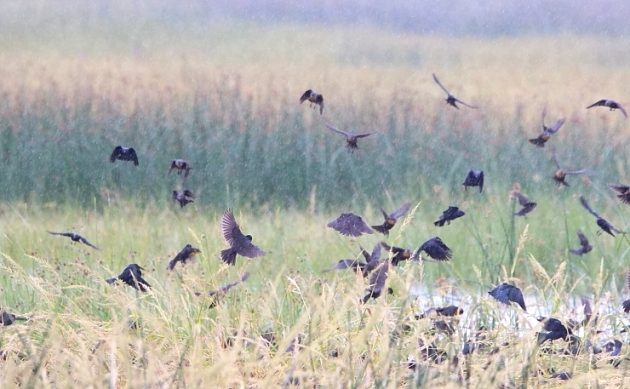
But in flight, and high in the reeds, Yellow-headed Blackbirds came to the fore.
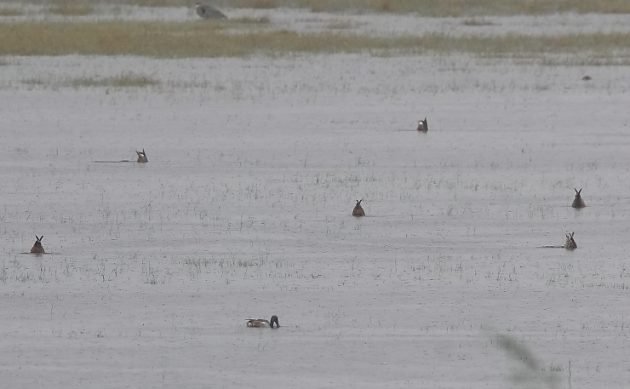
When you are a Northern Shoveler, a rainy day changes none of your daily activities, such as feeding. Water above you, water below you, it’s all just water anyway.
And then, around noon, it finally happened: It stopped raining! Oh, I won’t say that the sun came out, forming a double rainbow, or anything like that. But at least I was finally able to walk away from my car. And, all of a sudden, I could stop taking photos at the highest light setting and lowest speed, while also achieving something more than shades of gray.
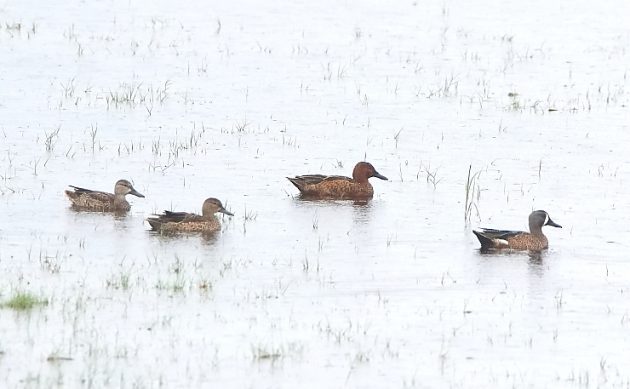
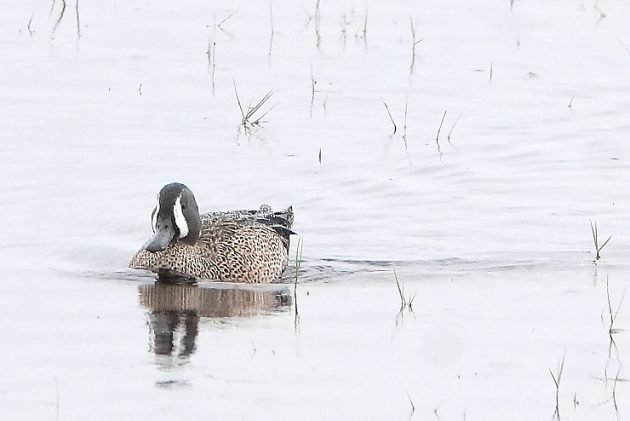
Now that’s how Teals are supposed to look.
This sudden end to the rain saved the last two hours of my outing, as I had been seriously considering calling it a day before the rain ceased. But the stormy skies turned to merely gray skies, so off to my last destination I went. The lake shore of the town of Cuitzeo is an excellent place for shorebirds, and my experience of them was much better because I had remembered Lesson #4: When seeking shorebirds during the rainy season, take rubber boots. Rained-on mudflats are the muddiest mudflats.
But so worth it! Although I had earlier seen my first Gadwalls for the season, my real finds for the day were two species which supposedly should not visit the Mexican highlands: one Black-bellied Plover, and several Dunlins. The former are supposed to fly south only to and along Mexico’s coasts, while the latter should barely reach this far south in winter, and only along the coast. (Most winter in the U.S. and Canada).
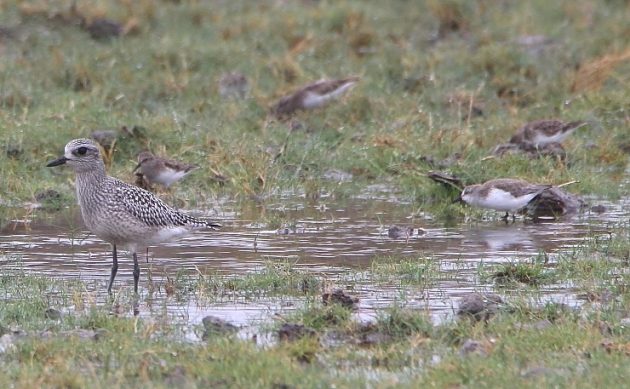
Black-bellied Plover on the left, collection of Peeps on the right
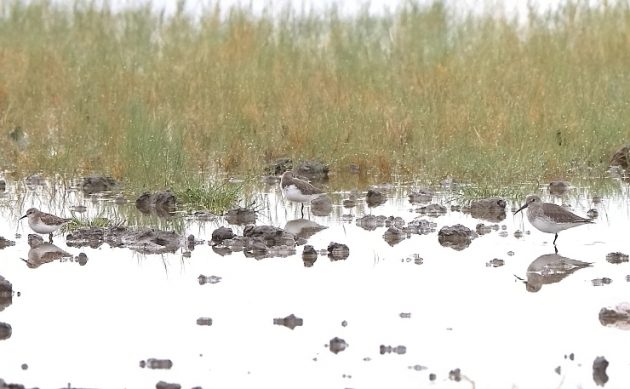
Those are Dunlins on the right and in the middle; longer bills, darker breast, and much larger than the much more common Western Sandpiper on the left.
I’ll throw in a few more adorable birds just to close out with a dose of cuteness:
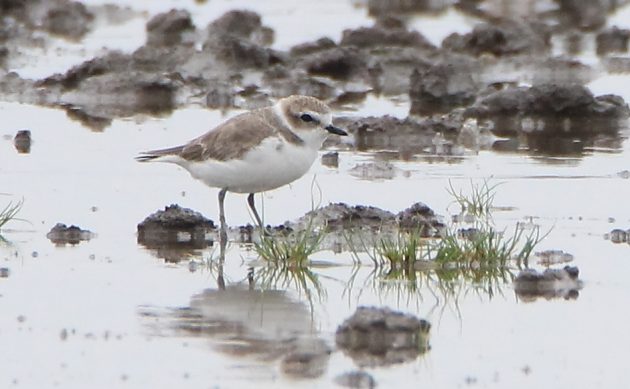
Snowy Plovers are adorable.
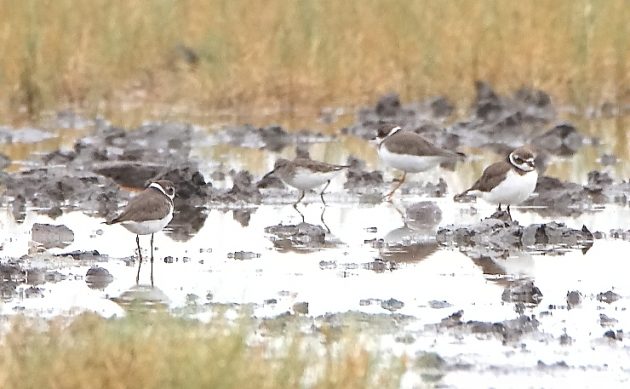
Semipalmated Plovers (with a Peep for good measure) are also cute.
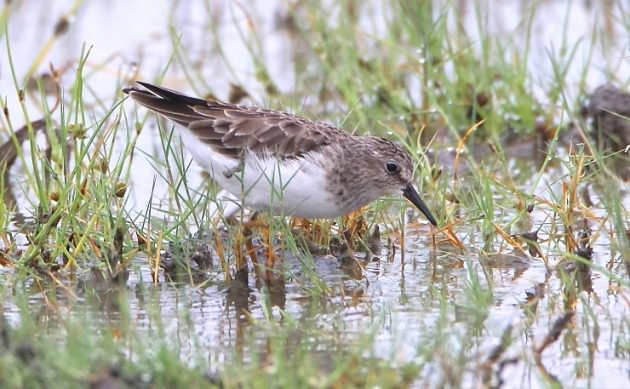
And I rarely get to see a Least Sandpiper this up-close-and-personal.
The moral of the story? Do stay safe, but don’t let the hurricanes get you down!











Nice! Rain is still better than fog, in my (unfortunately rather recent) experience …